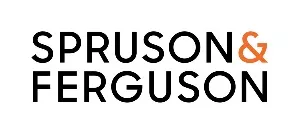Overview
Intellectual property holding companies are commonly used in large multinational groups. An intellectual property holding company is established to hold all or most of the intellectual property of a company group. Existing intellectual property of the company group is assigned to the company by other group members with ongoing arrangements in place to ensure that future intellectual property is also held by the IP holding company.
Usually, the holding company is a passive entity that does not trade. Occasionally, the holding company is also the ultimate parent company of the corporate group. The IP holding company enters into one
or more written or unwritten licences with other companies in the group to allow them to use the intellectual property. These other group members then enter into contractual relationships with customers and other third parties in relation to the intellectual property.
IP holding companies are established for various reasons including:
- Administration – to facilitate centralised management of all the intellectual property assets of a group;
- Asset protection – to quarantine the intellectual property from claims against the operating company/ies exploiting it. By placing the intellectual property in a non-trading entity which does not have a contractual or other relationship with customers, it becomes less likely that a customer or other third party can bring a claim against the owner of the intellectual property;
- Taxation/finance – to enable revenue to be generated in low income jurisdictions or to obtain research and development grants or deductions in jurisdictions with favourable rules;
- Structured finance or securitisation – to enable
- the intellectual property assets to be effectively separated from other assets so they can be made available as security or sold; and
- Disposal/spin-off – to facilitate the sale of the intellectual property or spin-off.
The attached table discusses issues associated with establishing a holding company and exploiting the intellectual property in the context of patents, designs, copyright and trade marks. Due to the differing legal rules applying to different types of intellectual property, careful consideration must be given to the form of any assignment and the nature of licences granted to other companies, whether within the corporate group or not. A particular issue is whether the holding company or a licensee can recover damages for infringement. In a patent context, this can be problematic unless arrangements are structured carefully.
Other issues to consider
The table below discusses a number of the issues relevant to assignment and licensing. Other things to consider include the following:
- Future intellectual property - the assignment and licensing agreements should cover assignment
- to the holding company and licensing back to the subsidiary of future intellectual property created
- by the operating subsidiary. Otherwise, new intellectual property will be owned by the licensee subsidiary not the holding company, potentially defeating the objective of establishing the IP holding company. This is a common problem.
- Moral rights in copyright works - moral rights are held by the individuals creating the works and cannot be assigned. However, consents can (and should) be obtained to do acts which would otherwise infringe the author’s moral rights, particularly if third party licences are granted.
- Any moral rights consent obtained must be broad enough to allow the IP holding company and third party licensees and assignees to do acts which would otherwise infringe the individual’s moral rights.
- Taxation implications (including GST) – all taxation implications arising from assignment and licensing need to be explored, especially if the holding company is incorporated overseas.
- Stamp duty – stamp duty issues associated with a company or business acquisition, disposal or re-organisation should be carefully considered.
- Grant terms - the impact on any research and development or commercial grant applications or awards must be considered in advance, particularly in relation to compliance with or fulfilment of applicable grant conditions.
If there are no sales by the holding company or royalties from the licensee then the holding company has no claim for damages in infringement action (account of profits and injunction may be available). The owner cannot recover damages suffered by the licensee. This applies to patents, designs, copyright and trade marks.
Licensing does not jeopardise registration of the IP in respect of a patent, design or copyright. However, if a holding company does not use the trade mark itself, the trade mark may be vulnerable to removal for non-use. Use by the licensee is only use by the owner if the owner controls use of the mark by financial, quality or other control. Financial control occurs if the licensee is a subsidiary and is subject to the owner’s financial control. Quality control occurs where the owner enforces quality standards. Other control may be established in a company group context even though the trade mark owner does not control the related company using the mark but this can be problematic.
A mark is vulnerable to removal if its use may mislead the public as to the quality or origin of goods. (More of an issue for third party licensing than licensing within a group).
Concluding remarks
Due to the inconsistent legal requirements applying to the different types of intellectual property, care must be taking in deciding whether to establish an IP holding company. Documentation of the transfer of the intellectual property into the company and in any licences of the intellectual property also requires close attention. A regular review of contractual arrangements is essential to ensure that the intellectual property can be protected and defended in an infringement situation.
Chris Bevitt, Partner
QUICK GUIDE
Intellectual Property Holding Companies – Assignment and Licensing Issues
|
ISSUE |
PATENT |
DESIGN |
COPYRIGHT |
TRADE MARK |
|
Assignment of the IP to the IP holding company |
||||
|
Formalities to transfer the IP |
Written assignment signed by the assignor and assignee. |
As for patent. |
Written assignment signed by the assignor. |
A document establishing assignee’s title, meaning a written assignment signed by the assignor and assignee. |
|
Partial assignment by territory? |
Not permitted. |
Assignment can be for a particular place. |
Assignments can be for a place in or part of Australia. |
Not permitted. Registered trade marks are assignable with or without goodwill. Note: common law ie. unregistered trade marks are only assignable with goodwill and are not suitable to assign to a non-trading holding company. |
|
Licensing by the holding company |
||||
|
Can multiple licensees bring an infringement action? |
No. Only the patent owner and the "exclusive licensee" may bring infringement proceedings. "Exclusive licence" means a licence entitling the licensee to "exploit" the invention throughout the patent area to the exclusion of the patent owner and other parties. Notes: Exclusive licences should be registered. Multiple exclusive licences of different exploitation rights in respect of the same patent are not exclusive licences under the Act. |
No. Only registered owner of a design can bring an infringement action, not a licensee. |
No. Only copyright owner and "exclusive licensee" may bring infringement proceedings. "Exclusive licence" means a written licence authorising licensee to do an act reserved to the copyright owner to the exclusion of other persons. Note: Unlike with patents, multiple exclusive licensees for different copyright rights in respect of the same copyright material are permissible. The licence must be for one of the acts reserved to the owner under the Copyright Act. |
Yes. The trade mark owner and authorised users can bring infringement proceedings. There is no need to appoint an exclusive licensee to enable the licensee to sue for infringement. "Authorised user" is a person who uses the mark under the control of the owner. See below for a discussion of "control". An authorised user’s right to bring infringement proceedings can be removed by contract. This is commonly done where the authorised user is a third party, rather than a member of the same company group as the owner. |
The content of this article is intended to provide a general guide to the subject matter. Specialist advice should be sought about your specific circumstances.


